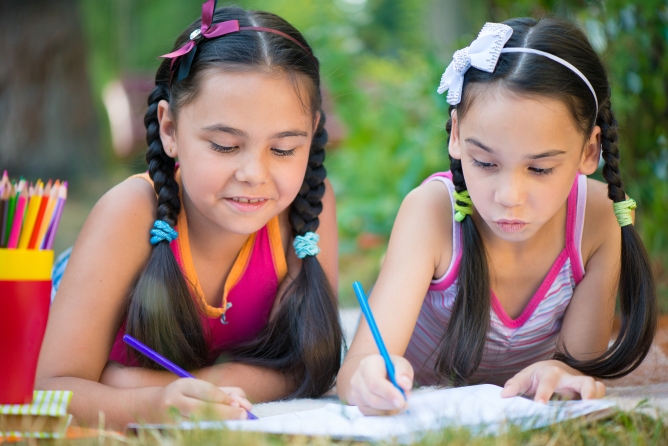Trade In The Camera for Crayons This Summer and Try Travel Sketching
Tourists with digital or cell phone cameras aren’t an unusual sight. But taking hundreds of pictures of your vacation may not be the best way to remember it.
A study published in Psychological Science finds that people often can’t remember objects as well when they took photos of them. Linda Henkel of Fairfield University is behind the study.
“People so often whip out their cameras almost mindlessly to capture a moment, to the point that they are missing what is happening right in front of them,” says Henkel.
The researcher calls this “photo-taking impairment effect” and explains that “when people rely on technology to remember for them—counting on the camera to record the event and thus not needing to attend to it fully themselves—-it can have a negative impact on how well they remember their experiences.”
Some avid snappers may argue that looking at their pictures later helps bring back the memories. However Henkel says the sheer volume of pictures people take and the lack of organization of them can keep people from looking at them again. “In order to remember, we have to access and interact with the photos, rather than just amass them.”
But if you want to give your kids another way to record what they see this summer try travel sketching. Candace Rardon is a writer and sketch artist who began making drawings of what she saw on her travels a few years ago.
“I immediately noticed two effects the process had on me…..Sketching slows you down, and helps you be present….Sketching [also] makes your whole body pay attention. With my camera in hand, I seem to run around recording everything while retaining next to nothing. Without a machine to do the remembering, I had to become the camera,” says Rardon in Travel Sketching: A Manifesto.
Rardon gives three suggestions for beginning sketchers.
Think of the world as your studio. All a person needs to get started is a sketchbook, pen, colored pencils or a travel-sized watercolor field kit.
See with your eyes, not with your brain. Take time to study a scene, and constantly compare what you’ve drawn with what’s actually in front of you.
Use all of your senses. In addition to using your eyes, Rardon says “flexing your other sensory muscles can deepen your engagement.” Think about what you smell and hear as well.
“The key to maximizing future memories, then, is to simply be present, to pay attention to the details that interest you, to look at them closely,” says Robert Reid, another adventurer who records his trips through journals and sketchbooks.
For most of us, a camera is still an important tool to record the places and people we visit and the idea of drawing can be intimidating for the non-artists among us. But this artwork can be as simple or complex as a person wants. So along with the camera, parents might want to also pack some paper and pencils to help their children record what they see this summer.


